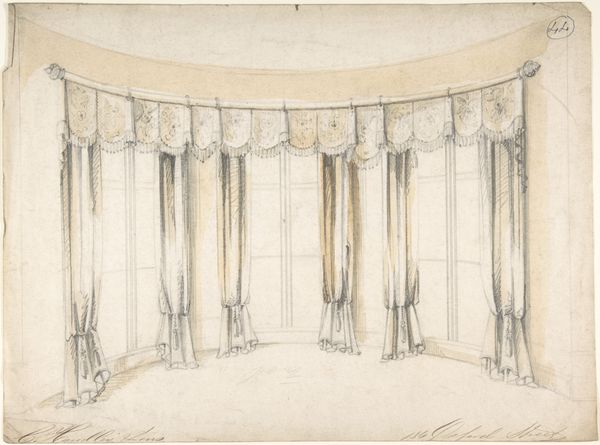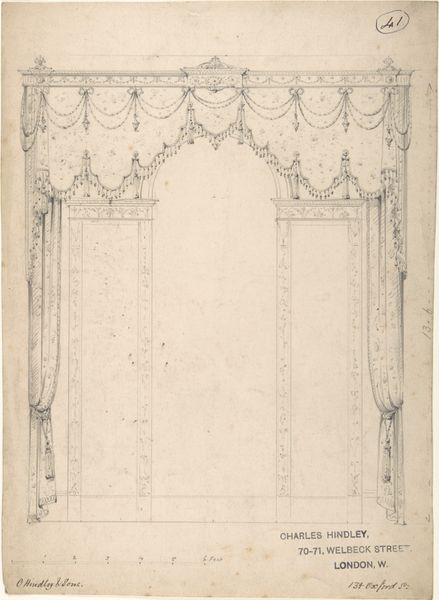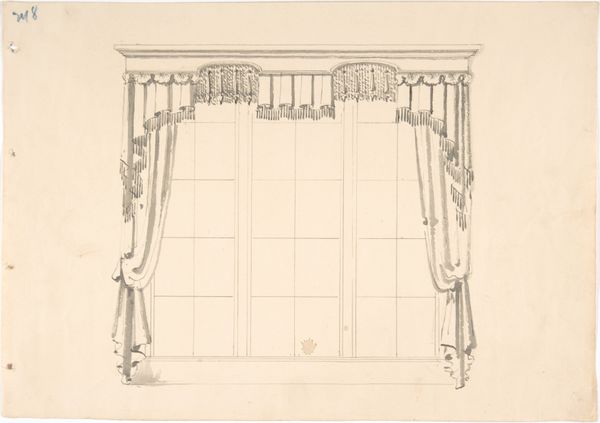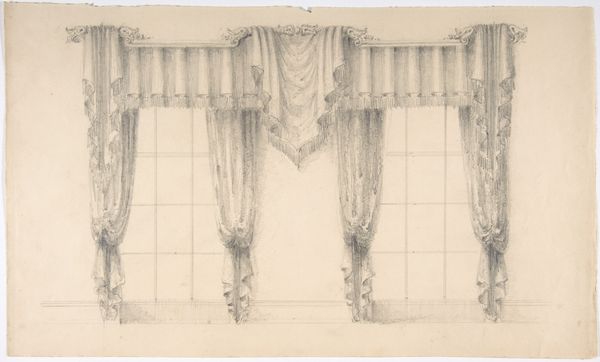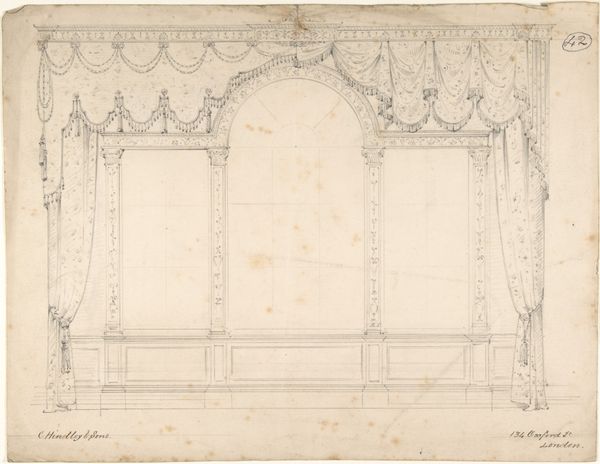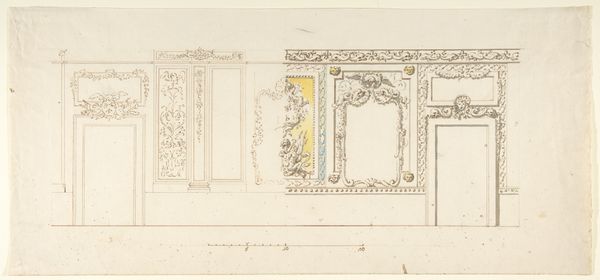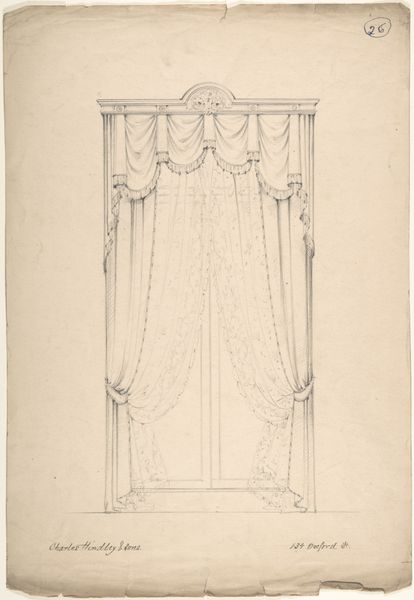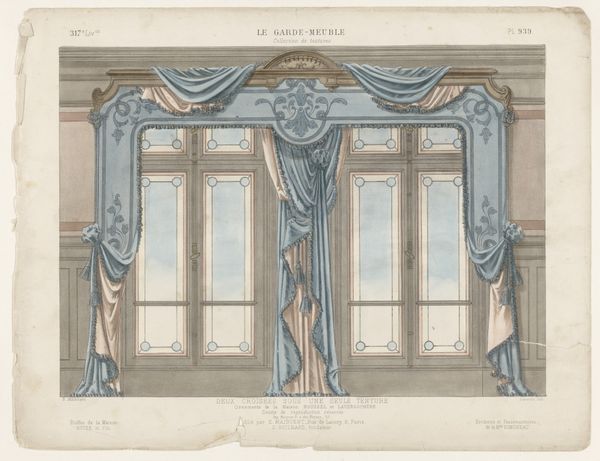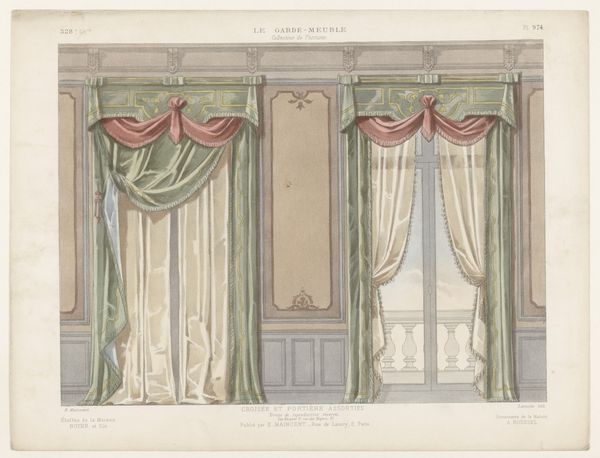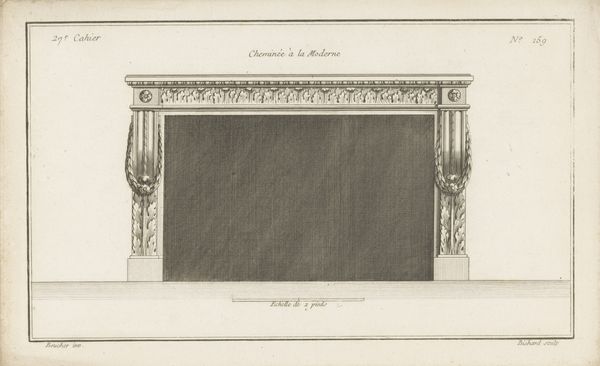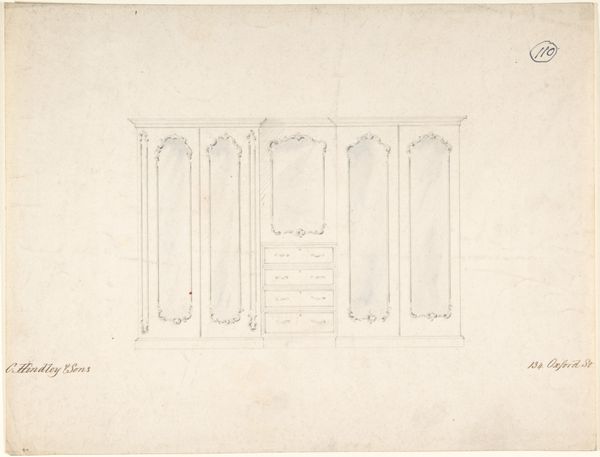
drawing, paper, pencil, pen
#
drawing
#
pen sketch
#
etching
#
paper
#
geometric
#
pencil
#
line
#
pen
#
decorative-art
Copyright: Public Domain
Curator: Well, hello! I see that we have before us "Design for Window Drapery," dating sometime between 1830 and 1900. It is a work on paper, using pencil and pen—we might even say a sketch! It lives here at the Metropolitan Museum of Art. Editor: Oh, I like this. My first thought? Elegant theatre! It is as if the curtain is about to rise on a fascinating domestic drama. I love how meticulously detailed the rendering is, while it still somehow has this breezy, ephemeral feel. Curator: Exactly! The symmetry speaks to the design aesthetic of the time, the focus on balance. But more than that, it whispers to the social life of those grand homes. Windows, light, display—a way to be seen and a frame through which to view the world outside. Editor: Right. All that draping must have soaked up a lot of light! Think of the textures: how that would play with sunlight in the room...almost baroque! Do you think the sketch aspect gives it a forward-looking quality? Like, 'here’s how we are thinking of adorning space'? Curator: Yes, indeed. Design became an increasingly specialized and professional pursuit during this era. And this detailed sketch underscores that transition. Someone wasn't just thinking, “let's put up some curtains.” It's an articulation of an idea for potential clients, reflecting shifts in production and marketing. Editor: Makes me ponder the politics embedded in these designs, the messages these windowscapes projected about wealth and taste. It seems almost absurd in its overt display, but somehow graceful! Curator: I find that interesting. Were you able to step inside the lives behind those windows? Were these designed to both conceal and reveal at the same time? It would really speak to how architecture both reflects, and perpetuates class difference. Editor: True. The artist captures so many subtleties. Thinking about the craft... you see how the artist’s attention can transform simple things, like drawing materials, into something truly extraordinary. Curator: Looking at this makes me appreciate the small glimpses it gives us into both private and public life in that era. Thank you for that insight. Editor: And I find myself appreciating that line between the artistic impulse and historical context—that tension is always fertile ground for a more complex vision of life.
Comments
No comments
Be the first to comment and join the conversation on the ultimate creative platform.
